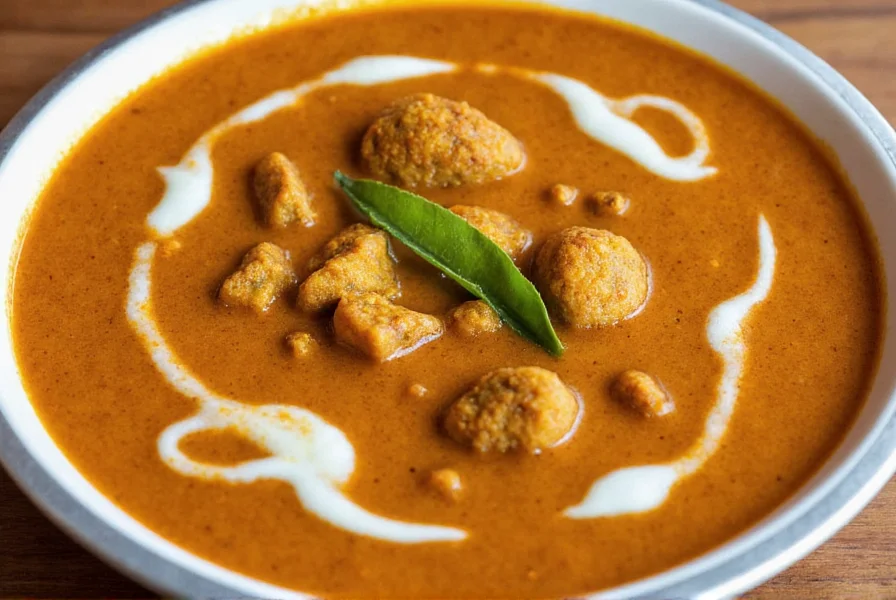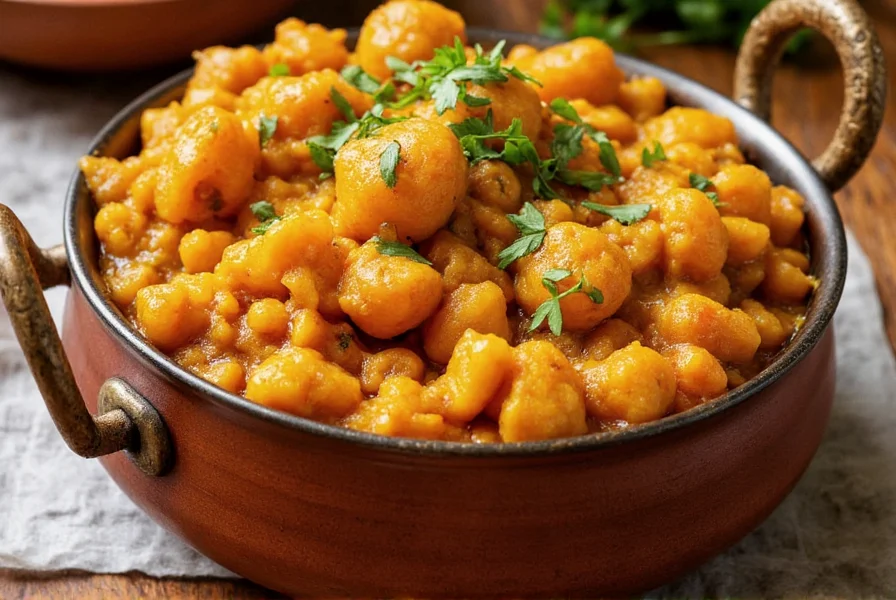When exploring where curry originates, it's essential to distinguish between the culinary concept and the linguistic term. Ancient spice blends featuring turmeric, ginger, and pepper appeared in South Asian cooking as early as 2500 BCE, with archaeological evidence from the Indus Valley Civilization revealing mortar and pestle tools used for grinding spices. These early preparations formed the foundation for what would later be categorized under the umbrella term “curry.”
The Linguistic Evolution of “Curry”
The word “curry” entered the English language through British colonial interactions in South India. Tamil speakers used “kari” to describe any dish with gravy, while Telugu speakers said “koori” and Malayalam speakers used “kari.” British traders and colonists in the 17th and 18th centuries adopted “curry” as a catch-all term for the diverse array of spiced dishes they encountered across the Indian subcontinent.
This linguistic simplification obscured the incredible regional diversity of South Asian cuisine. In India alone, traditional cooking includes:
| Region | Traditional Dish Names | Key Characteristics |
|---|---|---|
| South India | Kuzhambu, Sambar | Tamarind-based, lentil-infused |
| North India | Saag, Jhol | Cream-based, yogurt-enriched |
| East India | Jhol, Torkari | Mustard oil, pungent spices |
| West India | Shāk, Usal | Coconut milk, complex spice blends |
Historical Development of Curry-Like Dishes
Archaeological findings at Harappan sites reveal evidence of turmeric and ginger use dating to 2500 BCE. Ancient Sanskrit texts from 300 BCE describe prayuktis (spice mixtures) remarkably similar to modern curry powders. The Maurya Empire (322–185 BCE) facilitated spice trade routes that connected South Asia with Southeast Asia and the Middle East, spreading culinary techniques that would influence regional cooking traditions.
Portuguese traders in the 15th century introduced chili peppers to South Asia, which were rapidly incorporated into local cooking despite originating in the Americas. This adaptation demonstrates how curry preparations continuously evolved through cultural exchange, long before the term “curry” became standardized.

Global Dissemination of Curry
The British Empire played a pivotal role in globalizing curry. Returning East India Company officials popularized “Indian” curry in 18th century Britain, leading to the first curry powder blends marketed for home cooking. By 1784, London's first curry house, the Hindoostanee Coffee House, opened its doors.
Colonial trade routes spread curry concepts worldwide:
- British Caribbean: Jamaican curry goat developed using local ingredients
- Japan: Introduced via British Royal Navy, evolving into Japanese curry
- Thailand: Adapted into Thai yellow and red curries with local herbs
- United Kingdom: Created Anglo-Indian dishes like chicken tikka masala
Common Misconceptions About Curry Origins
Several persistent myths cloud understanding of where curry originates. Many believe curry is exclusively Indian, but Sri Lankan, Bangladeshi, and Pakistani cuisines all developed distinct spiced dishes independently. Others assume curry powder is traditional, when in fact pre-ground blends were created for British convenience—South Asian cooks typically prepare fresh spice mixtures.
Understanding the true history of curry requires recognizing that curry is not a single dish but a culinary concept that evolved differently across regions. The question “where does curry originate” actually encompasses thousands of regional variations that developed over millennia across South Asia.

Modern Interpretations and Cultural Significance
Today, curry represents one of the world's most adapted culinary traditions. UNESCO recognized washoku (Japanese food culture) in 2013, which includes Japanese curry as a significant element. In the UK, chicken tikka masala was famously dubbed “Britain's true national dish” by a former foreign secretary.
The evolution of curry demonstrates how food traditions transform through cultural exchange while maintaining connections to their historical roots. Contemporary chefs increasingly acknowledge the complex origins of curry, moving beyond colonial simplifications to celebrate the diverse culinary heritage of South Asia.
Is curry originally from India?
Curry as a culinary concept developed across the Indian subcontinent, including modern-day India, Pakistan, Bangladesh, and Sri Lanka. The term “curry” itself was popularized by British colonizers, but the spiced dishes it describes have ancient roots throughout South Asia with distinct regional variations.
What is the oldest recorded curry recipe?
The oldest documented spice-based recipes resembling curry appear in ancient Sanskrit texts from 300 BCE, describing “prayuktis” (spice mixtures). Archaeological evidence from the Indus Valley Civilization (2500 BCE) shows tools used for grinding turmeric and ginger, key curry ingredients.
How did curry spread globally?
Curry spread through multiple channels: ancient spice trade routes connected South Asia with Southeast Asia and the Middle East, Portuguese traders introduced chili peppers to the region in the 15th century, and British colonialism popularized “Indian curry” worldwide in the 18th-19th centuries, leading to regional adaptations across the British Empire.
Why isn't “curry” used in South Asian languages?
The term “curry” is an anglicized version of the Tamil word “kari” (meaning sauce), but South Asian languages have dozens of specific terms for spiced dishes. Hindi uses “kadhi,” Bengali uses “torkari,” and Malayalam uses “kalan”—there's no single word equivalent to the English “curry” across the region.
Did British colonizers invent curry?
No, British colonizers did not invent curry. They popularized the term “curry” to describe various South Asian dishes they encountered. The spiced stews and sauces existed for thousands of years before British contact, with archaeological evidence dating to 2500 BCE. The British did, however, create pre-mixed curry powders for convenience.










 浙公网安备
33010002000092号
浙公网安备
33010002000092号 浙B2-20120091-4
浙B2-20120091-4